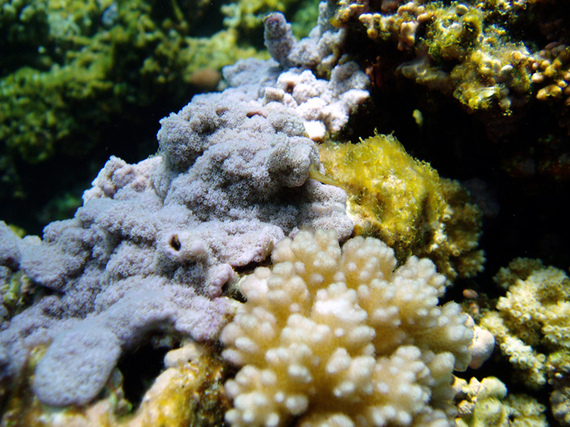It's no secret that the world's corals are in trouble but right now in the waters around Hawaii, it's some of the rarest corals on Earth that are getting hammered.
In recent weeks warming ocean temperatures near Oahu and Kauai have set off widespread bleaching. Some will survive but others, especially those already barely clinging to survival, will be a step closer to extinction.
I'm particularly worried about blue rice coral (Montipora flabellata), Hawaiian reef coral (Montipora dilatata) and sandpaper rice coral (Montipora patula), all of which are rare corals occurring only in the Hawaiian and Line Islands.
The three were among 66 corals proposed for Endangered Species Act protection in 2012 by the Obama administration, which said 97 percent of reefs were predicted to experience thermal stress -- a driver of mass bleaching and death -- by 2050.
When the final decision came out earlier this year, 20 were ultimately given federal protection but not those three in Hawaii.
I'm grateful, of course, that the 20 corals got protections but the latest bleaching episode in Hawaii is an unsettling reminder about how tenuous the survival of the world's corals really is.
Coral reef ecosystems are home to so many kinds of fish and other sea animals they're sometimes called "rainforests of the sea." They evolved over eons into vast, robust and colorful worlds so complex that we're still trying to figure them out.
But we do know is this: the carbon dioxide pollution we spew from our factories, power plants and cars is exacting a devastating toll. As our climate warms, so do our oceans. Those warming water temperatures stress corals, causing them to expel the algae that not only gives them their stunning color but also nutrients to survive. Adding insult to injury, the CO2 we dump on our oceans (some 22 million tons every day) is also turning the water more acidic, which means that corals that suffer from bleaching may never be able to rebuild their majestic reefs.
It has become a vicious and terrible cycle. Scientists say that without help, corals and coral reef ecosystems could be gone completely in just a few decades.
That's why what's happening right now in Hawaii is so disturbing.
These coral reefs harbor fish, crab and shrimp and draw tourists from around the world eager to snorkel and dive among wonderlands like nowhere else in the world. This latest bleaching event -- likely far worse than the last major one in 1996 -- has robbed 75 percent of the color from the dominant coral in Kaneohe Bay, according to one story, and prompted another report of a 10-foot wide head of coral, estimated to be 200 to 300 years old, to be turned bone white.
No doubt these anecdotes are indicative of a far-reaching bleaching outbreak that could last for weeks -- only to be repeated again and again in the coming years and the global climate crisis deepens.
It's easy to turn a blind eye to what's happening, especially because it's taking place out of our daily vision in places where few of us will ever see in person. But our negligence of the plight of corals -- willful or not -- will come at a steep price, exacted in the loss of these magical undersea worlds that we allowed to disappear.
Photo of blue rice coral (Montipora flabellata) courtesy of NOAA.
